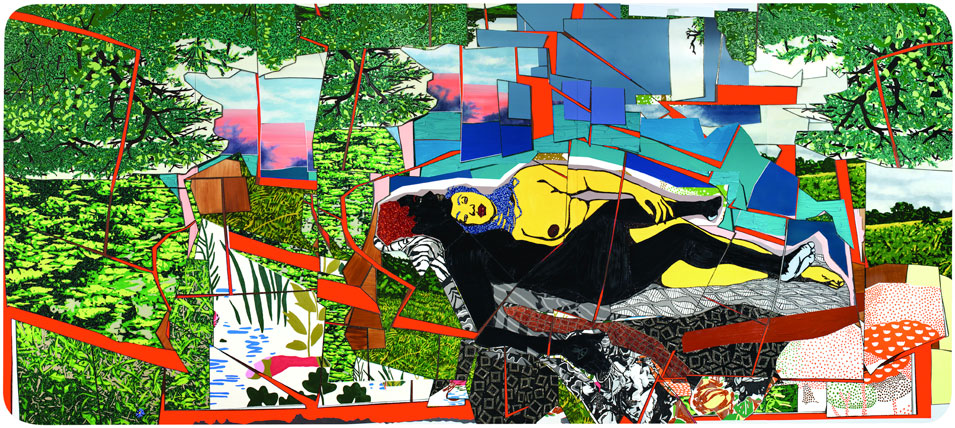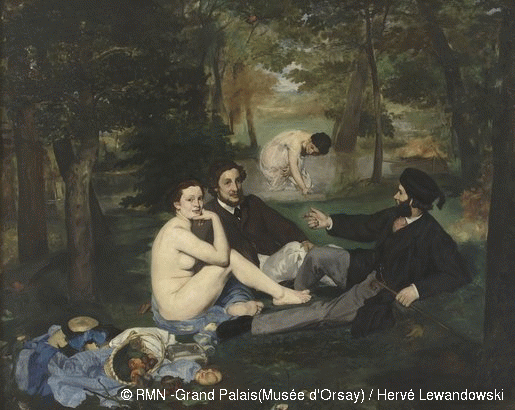February 2013
Lesson Plan
In the Classroom: Diverse Voices, Responding to Classic Literature
Goals and Objectives: For students to interact with modern responses to classic art, interpreting dialogue in art, and pulling on their own unique identities to develop personal voice in response to literature.
Warm Up:
In class, project and examine Mickalene Thomas’ work in response to old classics.




Deconstruct Thomas’ work using the following questions:
– How has Thomas changed the image of these classic paintings?
– What is her message to the audience?
– How does the use of materials contribute to this message?
– Which version do you prefer. Why?
Pre-Writing:
Following the examination of Thomas’ work, read Williams Carlos Williams’ This Is Just to Say, then Plums by Cheryl Boyce Taylor. Using the knowledge gathered from viewing the art, interpret Cheryl’s piece. Share brief bios on each poet to give context.
William Carlos Williams
http://www.poetryfoundation.org/bio/william-carlos-williams
Cheryl Boyce-Taylor
http://www.pw.org/content/cheryl_boyce_taylor_a_poet_is_born
Questions for interpretation:
1. Who’s voice has historically been amplified?
2. What are these artists (Thomas and Taylor) attempting to do in response? Why not simply create new pieces?
3. What is the purpose in responding to people who are no longer living if they never see it?
Writing Prompt:
Pick a classic poem by a voice that is wildly different than yours. Educators may want to offer a selection of literature to choose from including poets such as Rudyard Kipling, Robert Frost, Walt Whitman, Ezra Pound, Dylan Thomas, William Blake, etc.
Ask students to take the following journey:
1. Read and respond to the chosen poem. Why might this poem be considered a classic? What in it strikes you? What do you like? What do you relate to? What don’t you relate to?
2. Engage students in a dramatic reading of the classic poems and reflect- what felt strange to read in your own voice? Did it sound like you?
3. Looking at their notes about what did not resonate, have students respond to those pieces. How would someone who looks like them respond to or rewrite the poem? Age, race, ethnicity, etc.
Post-Critique: Peer Edits
In pairs, students should critique a partner’s work. Where can the metaphor and imagery be pushed? Is the piece clear? Is there a reason this story is being told? What feeling does it give the reader. Does it push the reader’s imagination?
Giving students a rubric or a check list grading sheet based on their identified “what makes a good poem” elements will help guide the process.
Editing
Using the advice given by peers, students retool and revisit their piece, adding imagery, metaphor and simile in areas identified and clarifying problematic/unclear language. It is helpful to scaffold this process into “draft one” and “draft two,” so students can see their own growth.
Share Out
Students share out in front of the class. It is always a positive experience to have students build in an element of positive feedback. Some ways to guide this process:
– Create a performance environment: Identify a student host to “lead” the “open mic.” Each student is introduced with a brief biography. Hand claps or finger snaps set the stage. Assign a student to “DJ,” intro-ing each poet coming to the “stage,” or front of classroom, with appropriate music.
– Sharing aloud: After each poem shared, ask for a few students to verbally share out parts of the poem they enjoyed.
– Index Cards: Have a list of guiding questions on the board. Ask students to give specific, positive feedback to each piece shared aloud that can be collected. At the end of class, distribute the index cards to each poet.
– Assigning “positive feedback” partners. Each student is assigned a fellow classmate to “grade” or “positively assess” a peer on their work using a rubric or pre-planned feedback sheet.
Beyond the classroom
Create an experience for the student work to live beyond the four walls of the classroom. Consider compiling a photocopied “chapbook” of the poems, asking an artistic student to illustrate the cover, or a blog where the poems can live and be shared with parents, school administrators and peers. Another option may be a lunch time “poetry open mic” where the students act as the “feature,” having a few brave class members share out their class pieces to a wider audience.
Related Article: Plums
Written and Developed by Caits Meissner for Well&Often